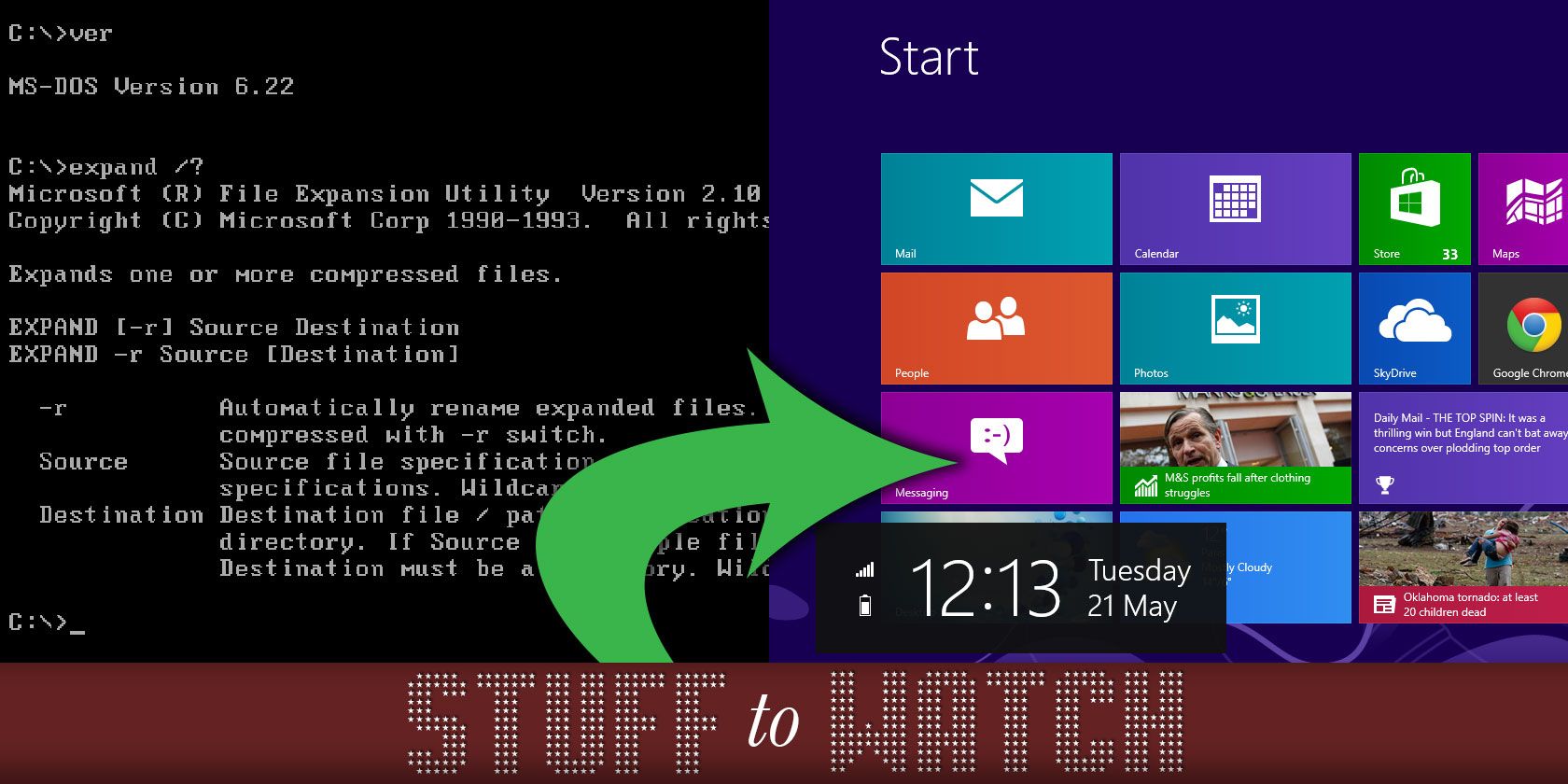There are some videos on the Internet so crazy that you just have to see them to believe them. Things like prisoners performing "Thriller", Chocolate Rain and this – a single MS-DOS installation being upgraded to Windows 8 in one sitting.
YouTube user Voltage^ condensed twenty six years of desktop computing into a short burst of nostalgia, with some notable highlights. And luckily, you don't need a full hour to watch the whole thing – there's a condensed version.
Why? How?
Let's not pretend this is useful, because it's not. If you want to run Windows 8, you should simply install Windows 8; in fact this isn't even possible on real hardware. Not like that game of Civilization that went on for ten years.
The video was created with the use of virtualization software VMware 8, which can be configured to meet the requirements of pretty much any operating system you throw at it. For context, Windows 1.01 required 192 KB (0.192 MB) of RAM in 1985, Whereas Windows 8 requires at least 1 GB (1000 MB) in 2014.
An IBM compatible like the Tandy 1000 would set you back $1,200 in 1984, which is roughly $2,600 in today's money. You can get up and running with Windows 8 for much less than that today, and save even more if Google has anything to say about it.
Windows 8 killed off support for many remaining DOS processes, so by the time Windows 8 is installed very few still work. There is still an MS-DOS folder left over, and programs written for Windows 2 and 3 are still operational and at the very end of it all the volume label remained "MS-DOS_6" as it was originally set. Impressive or pointless, you decide.
Let's Start
You probably don't have too much interest in dedicating one hour and seven minutes of your life to watching the entire procedure in realtime, but just in case you do here's the whole thing. Stick it on while you're doing something and be transported back to an era of driver disks and unfilled warranty cards.
It's far more likely that you'll want to watch this shortened four minute version instead. Everything whooshes by in a blur of command lines and progress bars, but you'll see enough ochre colour schemes and utilitarian UI elements to get your fix.
A Wolfenstein 3D save created with MS-DOS 6.22 is used as a test throughout, with the same desktop shortcut persisting from Windows 95 all the way through to Windows 8. Here are the exact steps performed by Voltage^ to create the video, taken from the YouTube description:
1. Install MS-DOS 6.22
2. Install Wolfenstein 3D as a test
3. Install Windows 1.01
3. Upgrade to Windows 2.03
4. Upgrade to Windows 3.0
5. Upgrade to Windows 3.11
6. Upgrade to Windows 95 (Used Upgrade Version)
7. Upgrade to Windows 98 (Used Upgrade Version)
8. Converted file system to FAT32
9. Upgrade to Windows ME (Used Upgrade Version)
(could have replace this with 2000, but choosed ME for faster install! ME and 2000 won't work!)
10. Resized Partition with Linux Live System to 40GB
11. Upgrade to Windows XP
12. Converted the file system to NTFS
13. Upgrade to Windows Vista
14. Upgrade to Windows 7
15. Upgrade to Windows 8
Of particular interest is step 10 where the file system is manually resized with a Linux, which just goes to show you can never underestimate the usefulness of a live Linux distribution like Hiren's Boot CD.
Fancy A Go?
Voltage^ has provided links to downloadable disk images up to Windows ME (including blacklisted serial numbers!) in the original upload description so you can replicate this process if you really want to. While that's unlikely, you can always download an old favourite, fire up VirtualBox and rediscover an environment you were once confined to from a different perspective.
Did you get nostalgic watching those progress bars fill up, or did I just make you feel old?

